The pdf of Mosquitoes and their Control: Integrated Pest Management for Mosquito Reduction around Homes and Neighborhoods is available at https://edis.ifas.ufl.edu/pdffiles/IN/IN104500.pdf
Preface
Homeowners who actively participate in reducing mosquitoes around the home can help decrease pesticide use, reduce the risk of contracting mosquito-borne diseases, and help ease the financial burden to local governments who are responsible for area-wide control. Modern mosquito control for the homeowner has to be an integrated pest management (IPM) program, utilizing a combination of methods that emphasizes source reduction, eliminating areas where mosquitoes thrive whenever possible. Surveillance for mosquitoes is required prior to the application of any insecticide to determine whether or not an application is necessary. Deterring certain mosquitoes can be accomplished by individuals through the use of screening, sanitation, and other techniques described in this document. The methods recommended in this publication are particularly effective in reducing mosquitoes that transmit diseases. Ultimately, homeowners who take responsibility for identifying and eliminating sources of mosquito production around their homes and neighborhoods will advance the health and quality of life for all Florida residents.
Mosquitoes
FLORIDA'S MOST WANTED:
Five mosquito species you need to know.
There are over 80 different species of mosquitoes known to occur in Florida. Some are pests; some transmit pathogens that cause disease. Here are a few that feed on humans:
Scientific name: Aedes aegypti
Common name: Yellow fever mosquito
Larvae are found in water-holding objects found around the home and yard, such as flower vases, tires, toys, bottles, conch shells, cans, refrigerator drain pans, barrels, bromeliad plants, and other containers.
Is currently present in all of Florida except Panhandle counties.
Vector of dengue, chikungunya, and Zika viruses.

Credit: James Newman, UF/IFAS FMEL
Scientific name: Aedes albopictus
Common name: Asian tiger mosquito
Larvae found in water-holding objects found around the home and yard, such as flower vases, tires, toys, bottles, cans, barrels, tree holes, bromeliad plants, and other containers.
Found in all Florida counties.
Vector of dengue, chikungunya, and Zika viruses.

Credit: Sean McCann, UF/IFAS FMEL
Scientific name: Culex quinquefasciatus
Common name: Southern house mosquito
Larvae are found in a variety of aquatic habitats, especially those with high organic content, including catch basins, ditches, containers, dairy lagoons, and others.
Found in all Florida counties, abundant throughout the state.
Vector of dog heartworm, St. Louis encephalitis virus, West Nile virus.
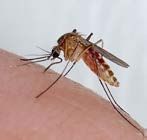
Credit: James Newman, UF/IFAS FMEL
Scientific name: Aedes taeniorhynchus
Common name: Black salt marsh mosquito
Larvae are found in salt marshes.
Found in all Florida counties, strong fliers. Major pests during summer and early fall.
Vector of dog heartworm.
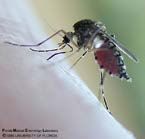
Credit: James Newman, UF/IFAS FMEL
Scientific name: Psorophora ciliata
Common name (unofficial): Gallinipper
Larvae are found in ditches, containers, grassy pools, furrows of citrus groves, pasture areas.
Found in all Florida counties.
Not known to vector any mosquito-borne pathogens.
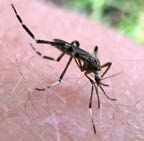
Credit: Sean McCann, UF/IFAS FMEL
Where Do Mosquitoes Live?
Mosquitoes are two-winged flies that live in humid tropics and subtropics, warm moist climates, temperate and cool zones—everywhere except areas that are permanently frozen. Globally, there are about 3,500 species of mosquitoes, and about 80 species occur in Florida.
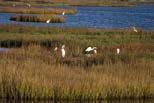
Credit: Peter Connelly, AMVAC, Inc.
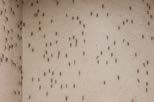
Credit: James Newman, UF/IFAS FMEL
Mosquitoes Are Attracted to...
- Damp or humid areas
- Dark, shady areas
- Standing water
- Carbon dioxide (breath)
- Warm temperatures
The Large and Small of It
One of the smallest mosquito species in Florida is called Uranotaenia lowii. The adults are about 2.5 millimeters in length and are adorned with iridescent blue scales. This mosquito species feeds on frogs, toads, and salamanders.
The two largest mosquito species in Florida are Psorophora ciliata and Toxorhynchites rutilus. Each of these two species has a wingspan of about 6–7 millimeters. Psorophora ciliata is also known as the "gallinipper," nicknamed by those who claimed the mosquitoes take a gallon of blood when they bite.
Toxorhynchites rutilus is a mosquito that never feeds on blood. Females use sugar from plant sources for the developing eggs. Both Psorophora ciliata and Toxorhynchites rutilus are predatory while they are in the larval stage and will eat other mosquito larvae.
Diseases Spread by Mosquitoes
Several of the mosquito species that inhabit Florida are capable of transmitting pathogens that sometimes cause disease in humans, horses, and some companion animals such as dogs and cats. The following is a list of mosquito-borne diseases that have been detected in Florida:
- Chikungunya
- Affects humans. No vaccine.
- Dengue
- Affects humans. No vaccine.
- Dog heartworm
- Affects dogs and cats.
- Preventatives available from veterinarians.
- Eastern equine encephalitis
- Affects humans, horses, and some exotic birds.
- Vaccine is available for horses.
- St. Louis encephalitis
- Affects humans. No vaccine.
- West Nile fever and West Nile encephalitis
- Affects humans and horses.
- Vaccine available for horses.
- Zika
- Affects humans.
- No vaccine.
For more information on the mosquito-borne diseases that affect humans, visit https://www.cdc.gov/niosh/outdoor-workers/about/mosquito-borne-diseases.html .
Mosquito Life Cycle
Mosquitoes develop through 4 different forms during their life cycle: Egg, larva, pupa, and adult.
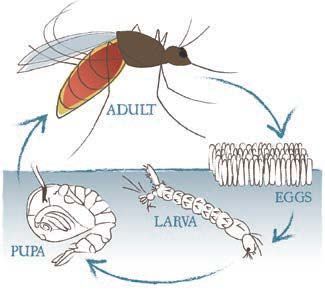
Credit: UF/IFAS
Eggs
Mosquito eggs vary in size depending on the species, but most are smaller than a grain of ground pepper. The type of egg and how it is deposited varies among the different species of mosquitoes. Some mosquito species have eggs with floats on the side, and some eggs are covered with small bumps.
Eggs that are deposited on the water surface, called permanent water eggs, cannot withstand drying out and usually hatch within a day or two. Eggs that are deposited on a moist substrate, called floodwater eggs, require a period of drying out, and then will hatch when covered with water.

Credit: Roxanne Connelly, UF/IFAS FMEL
Larvae ("Wrigglers")
Mosquito larvae live in the water and come to the surface to breathe with their breathing "siphon." One type of mosquito, Anopheles, does not have a breathing siphon. It breathes at the water's surface through openings called "spiracles" located on the abdomen. Out of water, mosquito larvae will not survive.
As they grow, larvae shed their skin, or molt, four times before they transform into pupae. Each larval growth period is called an instar. Larvae feed on organic matter and living organisms by filtering water through their mouthparts. Mosquito larvae can eat algae, bacteria, copepods (small crustaceans), yeast, other organic matter and microorganisms in the water. Some species can even eat other mosquito larvae.
Mosquito larvae are called "wrigglers" because of the way they swim through the water, using an s-shaped motion. The larval stage can last from several days to several months depending on the water temperature and the mosquito species.
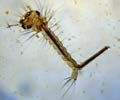
Credit: George O'Meara, UF/IFAS FMEL
Pupae ("Tumblers")
Pupae are aquatic. They have to come to the water surface to breathe through their "trumpets" (two appendages that allow them to take in oxygen). They will not survive for long out of water.
Pupae cannot feed because the mouthparts are inside the pupal skin and are not functional during this life stage. They survive this stage by using remaining energy reserves from the larval stage.
Mosquito pupae are called "tumblers" because of the way they dive down and tumble through the water when disturbed. Generally, the pupal stage lasts about two to three days.

Credit: James Newman, UF/IFAS FMEL
Adults
At the end of the pupal stage, the combined head and thorax splits open and the adult mosquito crawls out onto the water surface. The wings must dry and harden before the mosquito can fly. It takes about four minutes for the adult to emerge. During this time, if the water is disturbed enough, the mosquito can fall over and be trapped in the water and die.

Credit: James Newman, UF/IFAS FMEL
Flying, Feeding, and Bloodsucking
Mosquitoes fly to mate, find blood sources, escape predators, lay eggs, and find resting places.
Flight Facts
- The frequency of the mosquito wing beat ranges from 300–600 beats per second.
- Males and females of the same species recognize each other by listening to wing beat frequency.
- Flight activity is reduced at temperatures around 60°F, and mosquitoes are inactive at 50°F and lower.
- How far a mosquito flies from its aquatic habitat varies with species. Some go only 500 feet from where they emerged; others move dozens of miles from the larval habitat.
Both male and female mosquitoes feed on nectar to obtain sugar as an energy source for flying. Nectar sources include flowers, injured plants, honeydew (excreted by other insects while they feed on plant sap), and fruit juices.
The Blood Meal
Female mosquitoes need blood to nourish their developing eggs. Some species can develop their first batch of eggs without a blood meal. The source of blood for female mosquitoes varies depending on host availability and mosquito species.
Female mosquitoes are attracted to carbon dioxide. Humans and other animals exhale carbon dioxide with every breath.
After locating and landing on an attractive host, the mosquito probes the skin with her mouthparts (known as a proboscis) to find a capillary in the skin. She pierces the skin with her serrated proboscis, not really biting, but sucking blood. She injects a pain killer, present in her saliva, which makes the piercing less noticeable. Her saliva also contains a blood thinner so that the blood will flow into her, rather than clot. If her salivary glands are infected with a pathogen, it may be transmitted to the host when she takes the blood meal.
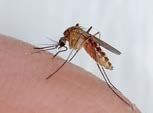
Credit: James Newman, UF/IFAS FMEL
After feeding on blood, the female mosquito needs to find a resting spot while her body digests the blood, which can take up to three days. She looks for dark, shady, well-protected areas to rest, to avoid being eaten, and to stay warm and humid.
When the female mosquito has digested a blood meal and is ready to lay eggs, she is attracted to various water sources. Some mosquito species are very picky about where they lay their eggs and will search until they find the perfect water source for their tastes.
How much blood can one mosquito take?
The volume of blood one female can ingest depends on her size. Generally, mosquitoes take in about five microliters of blood. How much is that? When people donate blood, the typical amount taken is a pint. It would take 94,600 five-microliter mosquito bites to get a pint of blood!

Credit: Alan G. Curtis, Indian River Mosquito Control District
Mosquito Habitats
All mosquitoes require water for the eggs to hatch, and for the larvae and pupae to grow. Different mosquito species prefer different types of water for laying eggs and completing their aquatic stages of life.
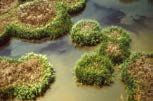
Credit: Trey English, ADAPCO, Inc.
The three major types of aquatic habitats are permanent water, floodwater, and containers. Permanent water habitats, such as ponds and backwaters, remain wet most of the time. Floodwater habitats, including mudflats and marshes, are temporary and can change quickly depending on weather conditions. Container habitats can be natural, such as tree holes and bromeliad plants; or human-made, such as bottles, tires, buckets, and more.
Permanent Water Habitats
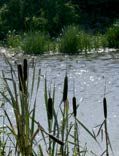
Credit: UF/IFAS
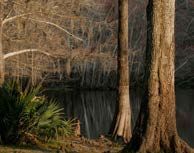
Credit: UF/IFAS
Floodwater Habitats
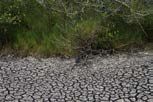
Credit: Peter Connelly, AMVAC, Inc.
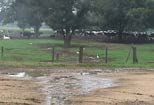
Credit: UF/IFAS FMEL
Container Habitats
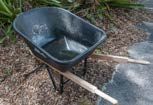
Credit: James Newman, UF/IFAS FMEL
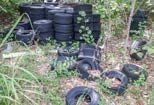
Credit: James Newman, UF/IFAS FMEL

Credit: James Newman, UF/IFAS FMEL
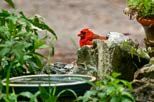
Credit: UF/IFAS
Essential Mosquito Control Tips for Homeowners
- Clean out eaves and gutters.
- Drill holes in or remove old tires.
- Turn over empty plastic pots.
- Check tarps on boats and equipment for standing water.
- Pump out bilges on boats.
- Replace birdbath water once a week.
- Empty water in plant trays and hanging baskets once a week.
- Remove vegetation or obstructions in drainage ditches that prevent water flow.
- Clear out thick brush to increase airflow around the home.
Dress
Wear clothing that covers most of your skin.
DEET
Use a repellent containing DEET or EPA-registered active ingredient.
Drainage
Mosquito eggs need water to hatch. Inspect the area around your home to get rid of standing water.
Controlling Mosquitoes
Personal Protection: Repellents
The U.S. Centers for Disease Control and Prevention (CDC) recommends the use of certain products containing active ingredients that have been registered by the U.S. Environmental Protection Agency (EPA) for use as repellents applied to skin and clothing. EPA registration of repellent active ingredients indicates that the materials have been reviewed and approved for efficacy and human safety when applied according to the instructions on the label.
CDC evaluation of information contained in peer-reviewed scientific literature and data available from EPA has identified several EPA-registered products that provide repellent activity sufficient to help people avoid the bites of disease carrying mosquitoes. Products containing these active ingredients typically provide reasonably long-lasting protection:
- DEET (Chemical Name: N,N-diethyl-m-toluamide or N,N-diethyl-3-methylbenzamide)
- Picaridin (KBR 3023 or icardin; Chemical Name: 2-(2-hydroxyethyl)-1-piperidinecarboxylic acid 1-methylpropyl ester )
- Oil of Lemon Eucalyptus* or PMD (Chemical Name: para-menthane-3,8-diol) the synthesized version of oil of lemon eucalyptus
- IR3535 (Chemical Name: 3-[N-Butyl-N-acetyl]-aminopropionic acid, ethyl ester)
- 2-undecanone (Chemical Name: methyl nonyl ketone)
In general, higher concentrations of an active ingredient provide longer duration of protection, regardless of the active ingredient. However, concentrations above ~50% do not offer a marked increase in protection time. Products with <10% active ingredient may offer only limited protection, often from one to two hours. Products that offer sustained release or controlled release (micro-encapsulated) formulations, even with lower active ingredient concentrations, may provide longer protection times. Regardless of what product you use, if you start to get mosquito bites, reapply the repellent according to the label instructions or remove yourself from the area with biting insects if possible.
* Note: This recommendation refers to EPA-registered repellent products containing the active ingredient oil of lemon eucalyptus (or PMD). "Pure" oil of lemon eucalyptus (e.g., essential oil) has not received similar validated testing for safety and efficacy, is not registered with EPA as an insect repellent, and is not covered by this CDC recommendation.

Credit: James Newman, UF/IFAS FMEL
How long are repellents effective?
The University of Florida's Florida Medical Entomology Laboratory has tested and published the results on the efficacy of the following repellents. Average Complete Protection Time is the time that elapses between the proper application of a repellent until the first mosquito lands on the protected area.
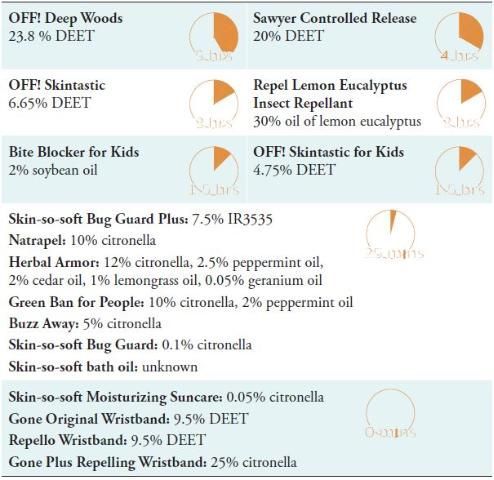
Credit:
Repellents for Use on Clothing
Certain products containing permethrin are recommended for use on clothing, shoes, bed nets, and camping gear, and are registered with EPA for this use. Permethrin is highly effective as an insecticide and as a repellent. Permethrin-treated clothing repels and kills ticks, mosquitoes, and other arthropods and retains this effect after repeated laundering. The permethrin insecticide should be reapplied following the label instructions. Some commercial products pretreated with permethrin are available.
EPA recommends the following precautions when using insect repellents:
- Apply repellents only to exposed skin and/or clothing (as directed on the product label.) Do not use repellents under clothing.
- Never use repellents over cuts, wounds or irritated skin.
- Do not apply to eyes or mouth, and apply sparingly around ears. When using sprays, do not spray directly on face—spray on hands first and then apply to face.
- Do not allow children to handle the product. When using on children, apply to your own hands first and then use the material on your hands to apply it to the child. You may not want to apply materials to children's hands to avoid the chance they could transfer the materials to the eyes and mouth.
- Use just enough repellent to cover exposed skin and/or clothing. Heavy application and saturation are generally unnecessary for effectiveness. If biting insects do not respond to a thin film of repellent, apply a bit more.
- After returning indoors, promptly wash treated skin with soap and water. This is particularly important when repellents are used repeatedly during the day or on consecutive days. Also, wash treated clothing before wearing it again. (This precaution may vary with different repellents—check the product label.)
- If you or your child gets a rash or other reaction from an insect repellent, stop using the repellent, wash the repellent off with mild soap and water, and call a local poison control center for further guidance. If you go to a doctor because of the repellent, take the repellent with you to show the doctor.
- Note that the label for products containing oil of lemon eucalyptus specifies that they should not to be used on children under the age of three years. Other than those listed above, EPA does not recommend any additional precautions for using registered repellents on children or on pregnant or lactating women. However, the CDC does not recommend using insect repellent on babies younger than 2 months old.
For additional information regarding the use of repellents, please see CDC's webpage on how to prevent mosquito bites: https://www.cdc.gov/mosquitoes/prevention/index.html.
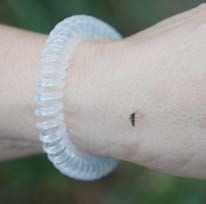
Credit: James Newman, UF/IFAS FMEL
There are many gimmicks for sale that do not work, so be an educated consumer and don't waste your money on impulse buys!
Some items that are not effective for reducing mosquitoes:
- Mosquito plants
- Bug zappers
- Consumption of garlic, vitamin B, and bananas
- Repellent bracelets and wristbands
- Ultrasonic devices and cell phone apps
- Dragonfly mimics
Reducing Mosquitoes in Your Environment
Source Reduction is the most important technique that homeowners can employ to reduce mosquitoes. Since mosquitoes need water to live, removing water sources around the home goes a long way to prevent mosquitoes from occurring.
- When water is intentionally collected for use, such as in rain barrels, the water holder should be modified to prevent mosquitoes from laying eggs on or near the water. Add screening to the top to prevent mosquitoes from laying eggs, or cover the rain barrel with a lid.
- For water that collects in discarded cans, bottles, and buckets, it is best to properly dispose of water-holding containers or empty the water from the containers.
- In Florida, it is best to flush out containers, such as bird baths and bromeliad plants, every three to four days during the summer.
- Clean up vegetation that has fallen from trees. Areca palm fronds, for example, hold water when they are on the ground.
- Take used tires to a local facility that will accept them.
- Dispose of old appliances that are sitting outdoors.
- Clean out the roof gutters to remove leaves that may clog the drain and cause water to be retained.
- Check for and repair leaky faucets.
- Check for standing water in your yard, areas that may pool and remain after rainfall events. Make sure these areas can drain well, or add Bti to kill the mosquito larvae (see Larval Stage Control section for more information).
- Water gardens and ornamental ponds are popular, but aerate them or stock with fish to reduce mosquito populations. See Mosquito Predators/Fish section for more information.
- Repair torn window and door screens to exclude mosquitoes from indoors.
- For homes with windows that don't have screens, use mosquito netting around the bed to prevent mosquitoes from biting while residents are sleeping.
- Fans can be used to keep mosquitoes away. Mosquitoes are weak fliers. Operating a fan on high will help keep flying mosquitoes out of the area.
- Organize community efforts to help everyone locate and remove sources of water where mosquitoes can live. If your neighbors are not reducing mosquitoes, you are still at risk for mosquito bites.
Mosquito Predators
Like other living organisms, mosquitoes are eaten by other organisms that are known as predators. While there are no organisms that are known to feed exclusively on mosquitoes, many animals will feed on them.
Fish, copepods (small crustaceans), dragonfly and damselfly nymphs, and frogs will eat mosquito larvae. Frogs, dragonfly and damselfly adults, birds, and bats will eat adult mosquitoes.
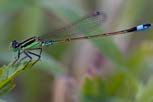
Credit: Tyler Jones, UF/IFAS
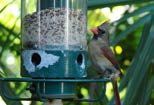
Credit: Roxanne Connelly, UF/IFAS FMEL
It is never a good idea to rely solely on natural predators to protect yourself from mosquito-borne diseases, as the predators are not able to consume every living mosquito. All it takes is one probe from an infected female mosquito to infect a human.
Fish
For ornamental ponds, aquatic plant nurseries, abandoned swimming pools, and sources of standing water that are intentionally placed for a specific use (feeding wildlife, rainwater for gardens, etc.), the addition of some small native fish can help to keep the mosquito larvae population to a minimum.
Fish native to Florida that can be used for mosquito control include
- Eastern Mudminnow (Umbra pygmaea)
- Pygmy Killifish (Leptolucania ommata)
- Lined Topminnow (Fundulus lineolatus)
- Golden Topminnow (Fundulus chrysotus)
- Sailfin Molly (Poecilia latipinna)
- Eastern Mosquitofish (Gambusia holbrooki)
- Least Killifish (Heterandria formosa)
- Banded Pygmy Sunfish (Elassoma zonatum)
- Everglades Pygmy Sunfish (Elassoma evergladei)
- Bluespotted Sunfish (Enneacanthus gloriosus)
- *Flier (Centrarchus macropterus)
- *Spotted Sunfish/Stumpknocker (Lepomis punctatus)
- *Bluegill or Bream (Lepomis macrochirus)
- *Redear Sunfish or Shellcracker (Lepomis microlophus)
* = game fish
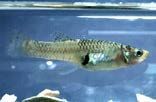
Credit: Jorge Rey, UF/IFAS FMEL
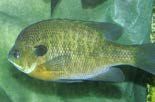
Credit: Wikimedia Commons
Most of these fish can be found in local water sources such as ditches and canals. If they are not game fish, they can be collected with a net, minnow trap, or barbless hook. Hook and line need to be used for game fish, and there are limits for game fish. Check with Florida Fish and Wildlife Conservation commission on limits (https://myfwc.com/).
Check with your local mosquito control agency, because in some Florida counties, the mosquito control program includes raising fish to provide to pond owners when requested.
Copepods
Copepods are aquatic crustaceans that occur in both fresh and salt water. They will eat early instars of mosquito larvae and can be added to areas where water cannot, or is not meant to, drain. Copepods can be collected from ponds, ditches, and other standing water sources with a mosquito dipper or turkey baster. Place the collected water into a container with a white background (they are transparent, so they are best viewed with a white background) and you should be able to see the copepods swimming along the bottom. The adult copepods are about the size of a grain of rice, and the young are about half that size. Transfer the copepods to the water source where mosquitoes are likely to occur. The copepods need water to survive, so if the area where they are placed becomes dry, the copepods will need to be replenished.
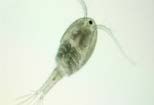
Credit: Jorge Rey, UF/IFAS FMEL
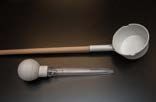
Credit: James Newman, UF/IFAS FMEL
Insecticides
NOTE: Before using any products to control mosquitoes, it is the homeowner's responsibility to read the label and apply the product only as directed. The label is the law; deviating from the instructions is illegal.
There are several products that will work to kill mosquitoes around the home that can be found at local hardware and retail stores. Prior to purchasing an insecticide, check to determine if you can reduce the mosquitoes through one of the source reduction techniques described elsewhere in this publication. Otherwise, decide whether it is the larval (aquatic) stage or the adult stage of the mosquito that needs to be targeted. Repellents that are labeled for use on the skin should NOT be sprayed onto the soil or water for control of adult or larval mosquitoes.
Adult Stage Control
If it is the adult stage that needs to be managed, the product must be an adulticide, meaning the label must indicate that the product is for flying insects. These products provide immediate but temporary relief. Most products available to homeowners for adult mosquito control come in the form of aerosols, foggers, and coils, and contain active ingredients known as pyrethrins or pyrethroids. Pyrethrins are plant-derived insecticides that work by altering nerve function in insects. The end result is that the insect is paralyzed and eventually dies.
Pyrethroids are the synthetic versions of pyrethrins. Their structure is based on the pyrethrins and they work on the insects in the same manner. Examples of pyrethroids include allethrin, cypermethrin, permethrin, phenothrin, pyrethrins, and tetremethrin. There may be other types available, but their name commonly ends in "thrin." Organophosphates, such as malathion, are another type of insecticide available to homeowners.
There are products labeled for treating vegetation where mosquitoes may land. The idea is that they will pick up the insecticide on their body when they rest on the shrubs.
The adulticides mentioned above are broad-spectrum insecticides and not specific to mosquitoes. Therefore, they should be applied at times and places where there is limited activity of other insects.
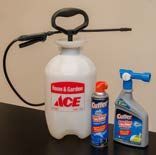
Credit: James Newman, UF/IFAS FMEL
Larval Stage Control
Insecticides used for controlling the larval stage of mosquitoes are called larvicides.
There are several forms of larvicides that contain a strain of bacteria that is toxic to the mosquito larvae after they ingest it. The bacteria is named Bacillus thuriengensis israelensis, or Bti. This active ingredient does not harm butterflies, bees, fish, frogs, or other non-target species; it is very specific to mosquitoes, midges, and black flies. It comes in the form of granules, or bits, and dunks.
Methoprene is an insect growth regulator that prevents the mosquitoes from developing into adults.

Credit: James Newman, UF/IFAS FMEL
Mosquito Control Organizations
Many Florida counties have mosquito control programs that are funded by local taxes. The first organized mosquito control district was established by the Florida legislature in 1925 in Indian River County. St. Lucie County Mosquito Control District was formed in 1926. There are now over 60 such programs of varying sizes throughout Florida.
The Mosquito Control Section of the Florida Department of Agriculture and Consumer Services (FDACS), Bureau of Entomology and Pest Control, administers mosquito control programs under the authority of the Mosquito Control Act, Chapter 388 of the Florida Statutes and Chapter 5E-13 of the Florida Administrative Code. A directory of mosquito control programs can be viewed at the following FDACS website: https://www.fdacs.gov/Business-Services/Mosquito-Control/Mosquito-Control-Programs.
The Florida Coordinating Council on Mosquito Control advises the Commissioner of Agriculture on mosquito control issues. The council meets three times a year and one of its mandates is to assist FDACS in resolving disputes arising over the control of arthropods on publicly owned lands.
The Florida Mosquito Control Association is a non-profit group with a mission to promote effective and environmentally sound control of disease-transmitting and pestiferous mosquitoes and other arthropods of public health importance; develop and enhance public interest, awareness, and support for the control of mosquitoes; and provide for the scientific advancement of members through meetings, training and education (www.yourfmca.org).

Credit: Jeff Stivers, Collier Mosquito Control District
History of Mosquitoes in Florida
1500s
The word "mosquito" first enters the English language. In a 1583 publication, Hakluyt's Voyages, M. Phillips writes of being annoyed by a kind of fly which the Spaniards called "musketas." Jesuit missionary writes from a settlement near Miami where he endured several months of swarms of bloodsucking mosquitoes which prevented him from sleeping many nights.
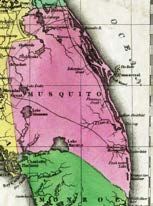
Credit:
1600s
After being shipwrecked, Jonathan Dickinson documents in his journal when the party encounters an "abundance of mosquitoes... hindered our rest, to remedy which we digged holes in the sand, got some grass and laid it therein to lie upon, in order to cover ourselves from the flies..." It provided little comfort. Portion of Florida's east coast labeled "Barra de Mosquitos" by mapmakers.
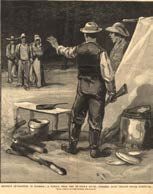
Credit: U.S. National Library of Medicine
1700s
Yellow fever epidemics in North America including Florida. Dengue epidemics in Florida.
1800s
Major yellow fever epidemics in Cedar Key, Jacksonville, Key West, Pensacola, St. Marks, and Tampa. Malaria common in Florida. Joseph Y. Porter appointed first state health officer and leads a life-long campaign to wipe out yellow fever and malaria in Florida.
1900s
Malaria Control in War Areas (MCWA) established around military bases in the southern United States where malaria was still present. Last cases of yellow fever in Florida. Florida Anti-Mosquito Association formed. First mosquito control districts formed in Indian River and St. Lucie counties. Aedes albopictus, the Asian tiger mosquito, discovered in Florida.

Credit: CDC/ K. Lord
2000s
Outbreaks of St. Louis encephalitis and eastern equine encephalitis. West Nile virus found for first time in Florida in Jefferson County. Over 60 mosquito control agencies established in Florida. Florida experiences outbreaks of dengue for first time in over 70 years. Chikungunya and Zika outbreaks occurred in Florida.
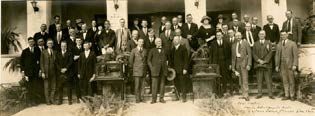
Credit: George W. Simons, Jr. Planning Collection, Thomas G. Carpenter Library, University of North Florida, Jacksonville, Florida.
Resources
Florida Medical Entomology Laboratory website. https://fmel.ifas.ufl.edu
Solutions for Your Life. For plant and insect questions, start with your local UF/IFAS Extension office. https://sfyl.ifas.ufl.edu/find-your-local-office/
UF/IFAS Extension EDIS publications. https://edis.ifas.ufl.edu/entity/topic/mosquitoes
Connelly RC, Carlson DB. 2009. Florida Coordinating Council on Mosquito Control. Florida Mosquito Control. The state of the mission as defined by mosquito controllers, regulators, and environmental managers. Vero Beach, FL: University of Florida, Institute of Food and Agricultural Sciences, Florida Medical Entomology Laboratory.
Frank JH. Bromeliad-inhabiting mosquitoes in Florida. https://entnemdept.ufl.edu/frank/bromeliadbiota/mosbrom.htm
Kern WH. 2011. Some Small Native Freshwater Fish Recommended for Mosquito and Midge Control in Ornamental Ponds. ENY-670. Gainesville: University of Florida Institute of Food and Agricultural Sciences. https://edis.ifas.ufl.edu/publication/in456
Koehler PG, Buss EA, Kern WH Jr., Pereira RM, Baldwin RW. 2013. Pests in and Around the Southern Home. Gainesville, FL: UF/IFAS Extension.
Patterson G. 2004. Mosquito Wars. Gainesville, FL: University Press of Florida.